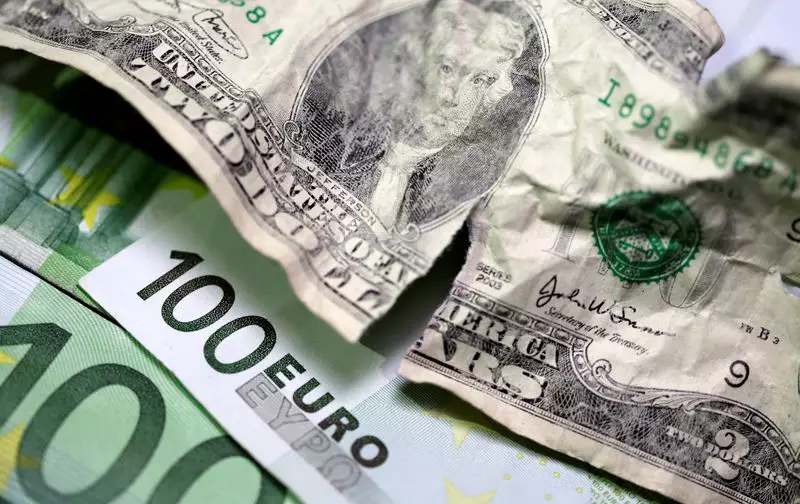The landscape of currency markets is often a barometer for broader economic trends, and recent movements in the US dollar and euro reflect a mixture of optimism and concerns. As trading volumes fluctuate and data points emerge, market participants are left to navigate a complex web of indicators that will likely shape monetary policy and economic forecasts.
On Thursday, the US dollar experienced a marginal decline, trading 0.1% lower at 106.180 on the Dollar Index—a metric that monitors the dollar’s strength against a basket of six other prominent currencies. This slight downtrend comes in the wake of disappointing private payroll figures and a cooling services sector, hinting that the robust growth many had anticipated may be stalling.
Federal Reserve Chair Jerome Powell has signaled a departure from aggressive interest rate cuts, emphasizing that the current economic condition may be stronger than previously estimated in September. This nuanced communication suggests that while there may be expectations of a rate cut in December, future monetary policy will likely unfold at a more measured pace. Analysts from ING echo this sentiment, highlighting that while recent weekly jobless claims have remained low, the forthcoming nonfarm payroll (NFP) data will significantly influence dollar valuation moving forward.
Despite political struggles in France, the euro managed to find a foothold against the dollar, climbing 0.2% to 1.0532. This growth is notable, particularly as the euro approached a two-year low against the dollar just weeks prior. The backdrop of this mild euro rally includes the recent no-confidence vote faced by French Prime Minister Michel Barnier, which threatens to disrupt fiscal stability in Europe’s second-largest economy.
While political uncertainties inflict worry on economic prospects, statistical reports indicate a potential downturn. German factory orders declined by 1.5% in October, alongside a similar slip in French industrial production. This data paints a troubling picture for eurozone growth, leading to widespread expectations that the European Central Bank is poised to implement rate cuts in the near future.
As analysts from ING suggest, the euro’s upward momentum might encounter a ceiling around the 1.0550 mark, particularly given the concentration of FX option strikes at 1.0500 set to expire soon. Such technical factors, combined with lower industrial output, could restrain the euro’s ascent against its American counterpart.
The British pound also saw improvement, rising 0.2% to 1.2721, buoyed mainly by an uptick in UK construction activity. However, market sentiment remains cautious as the ramifications of both domestic and international policy decisions continue to evolve.
Asian currencies reflected varying trends, with the USD/JPY falling 0.2% to 150.25 and the USD/CNY slipping 0.1% to 7.2709. The Australian dollar also saw a slight gain, increasing 0.2% to 0.6440. A notable rise was observed in the USD/KRW pair, climbing by 0.5% to 1,417.55, partly due to political volatility as South Korean President Yoon Suk-Yeol’s recent announcement to suspend martial law amidst public discontent sent shockwaves through the market.
As South Korea’s administration rolls out a significant market stabilization fund of 40 trillion won, attention remains focused on how the Bank of Korea might adjust its monetary policy stance, including the potential for increased bond purchases and repo operations.
The interplay between political events and economic indicators signifies the uncertainty gripping global markets. The dollar’s trajectory, influenced by upcoming labor data, alongside euro performance amidst fiscal challenges in Europe, underscores the need for astute analysis by investors.
As we look toward the end of the year, the anticipation surrounding labor market implications and central bank actions will remain high. While traders remain cautiously optimistic, they must remain vigilant to how geopolitical developments may shift the focus from economic fundamentals to broader strategic considerations in currency valuation.

